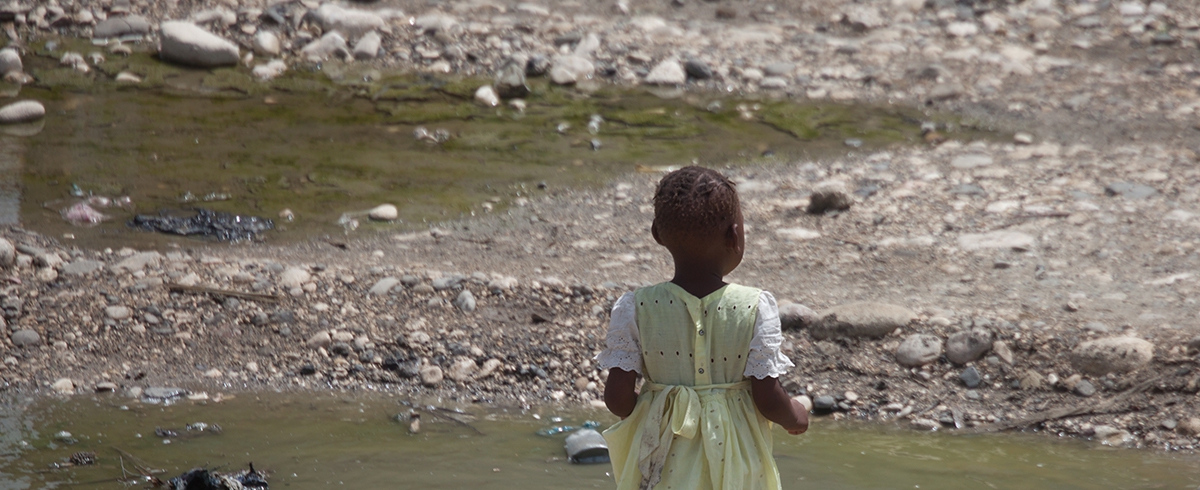My first job, as a young Residential Social Worker in Sheffield, Northern England, involved supporting very young mothers and babies to stay together. It brought amazing satisfaction to see how it was possible for 14 and 15-year-olds to become good mothers. It was by no means ideal, but once the babies had arrived, it was much better that they could stay with their mums, so long as they could cope.
The harrowing scenes I witnessed two years later in post-Ceaușescu Romania - the appalling harm to children separated from mothers and families and brought up in grim orphanages - will remain with me forever.
These are the deeply human and personal experiences which inspired me on my career path to work to end the institutionalisation of children.
I wonder sometimes, though, what my young self would say if she knew I would spend a great deal of my time, more than 20 years on, thinking and talking about money. I don’t think she would – or, at that stage, could - have understood.
Working in more than 20 nations I have come to realise that money, and financial management, are fundamental to successful reform that moves support to children away from institutions and so-called orphanages, to services supporting families to stay together in the community.
I understand now that the institutionalisation of children is not only extremely harmful to the development and life chances of children, but is also considerably more expensive than community-based services. This is bad economics in the present and the future, particularly in terms of the cost to societies in the longer term.
There is indeed a myth that ending institutionalisation for children in lower-income countries is not possible because these countries cannot afford the change. But evidence shows institutional care is both harmful and expensive wherever it is applied, whereas community-based services provide better outcomes and are more cost effective. Research in Russia shows that institutional care is six times more expensive than providing social services to vulnerable families or voluntary kinship carers. In both Sudan and Cambodia – from my experience and that of dedicated champions working on the ground – family-based care costs 10% of an institutional placement.
It is important to remember, however, that cost-effective does not mean cost saving.
Deinstitutionalisation is significantly cheaper for most children, in most cases, but highly specialised care for a small number of children and young people with complex needs, disabilities and behaviours can be expensive. Overall, DI is no more expensive than an institutionalised system and leads to far better outcomes for children and young people.
If any country proves the argument that reform is affordable, whatever the size of the budget, it is Moldova, by far Europe’s poorest nation. With Lumos’ help, Moldova created financial regulations to ensure that money saved from closing institutions – many of them grim ‘residential special schools’ – was reinvested in support for disabled children in mainstream schools. Over five years more than 4,500 children have moved from institutions to live at home and attend local, mainstream schools, where they are accepted as part of the community and are supported to learn and develop to their full potential.
Countries still running institutionalised care systems fall into two broad categories –the first where the State generally controls funding; the second where orphanages are predominantly privately funded.
The impact on children is similar. The needs of the system – the buildings, staff and continued survival of the status quo – take precedence over the individual needs of children and families. Children from families living in extreme poverty or those with disabilities can get drawn into orphanages as the only possible source of services. Where there is an orphanage built, children will come. The children follow the money; whereas in a deinstitutionalised system the reverse is true.
Lumos has built up considerable expertise in Central and Eastern Europe in helping governments redirect their money to community-based health, education and social services – including EU funds, which are now dispensed to Member States on the basis that they must support DI. In Sofia, in Bulgaria this week we have been hosting an important seminar on best practice in developing cross-government financial strategies to drive and sustain the shift from institutional to community-based services.
The government, with support from the European Commission (financial, moral and advisory) has made major strides forward in moving children from institutions to community based services. They are already making savings compared with their budget for running institutions when the reform began in 2009. But they have no mechanism to transfer those saving to community-based services that support families and prevent separation. That’s what we have been working on together – with the Ministry of Labour and Social Policy, Ministry of Health and Ministry of Education. And over the next few months we have agreed to help them develop the new regulations they need to make it possible to shift resources from institutions to community-based services.
In Haiti, next week, we will co-host another event in partnership with the Haitian authorities and the US government, who are already demonstrating their commitment to deinstitutionalisation. The funding of orphanages there is complex, with sources including international and governmental agencies, trust and foundations, philanthropic organisations, churches and faith-based groups, and individuals. We have made it a priority to analyse this picture and to identify the most effective levers to shift money away from institutional care. (As in Europe, with the EU, international aid organisations are a good place to start.)
There are more than 32,000 children in orphanages in Haiti, some living in horrendous conditions – contaminated drinking water, insufficient nutrition and a lack of access to medical care. Although this is shocking, it is not so different from the situation in Romanian orphanages 25 years ago, and we see similar conditions in many areas of the world.
More than 20 years on, though, we understand so much more about the way institutional systems are financed and how to shift money to the right place. We know that, by ensuring the money follows the children, we can transform their lives and ensure that no children in the future ever have to suffer the same fate.



